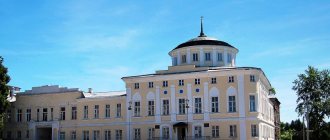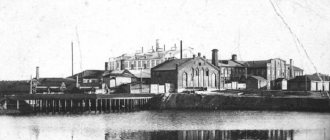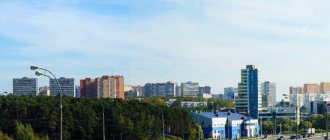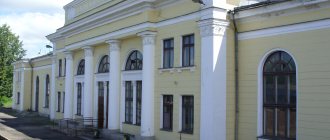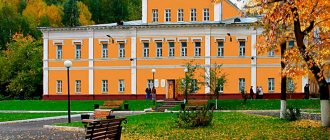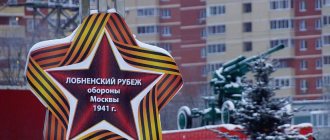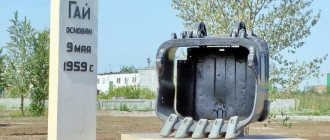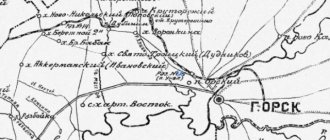Roslavl is a small settlement in the Smolensk region. Situated on the banks of the river. Oster, it attracts tourists not only with its picturesque landscapes, but also with an abundance of historical attractions and cultural monuments. In the 12th century, with the assistance of Prince Rostislav Mstislavovich, a fortress, Rostislavl, was erected on the left bank of the mentioned river. It was a defensive headquarters of the Smolensk Principality for protection against southern invaders. The population grew every year - over time, the city of Roslavl grew from a small border fortress. We will look at its sights and interesting places today.
Temples, churches and monasteries of Roslavl
The main attractions of the provincial town of Roslavl are considered to be objects of church and temple architecture of the 18th-19th centuries.
Spaso-Preobrazhensky Monastery
- Address: Proletarskaya, 56.
The beginning of the construction of the monastery dates back to the 16th century. The Kiev prince Rostislav wished to found a spiritual monastery in the city, for which monks of the Kiev Pechersk Lavra were invited to Roslavl.
Starting from the 17th century, the monastery was subjected to looting and destruction by invaders, and then, during the years of Soviet power, it was completely closed. In 1990 it was partially restored, and the services were restored. An Orthodox gymnasium began operating at the monastery.
On the monastery territory there are the Cathedral of the Transfiguration, built in the classical style, and the Church of Alexander Nevsky. Between these temples there is a wonderful garden with perennial oaks and linden trees.
From the protective fences and structures of this Roslavl landmark, only small fragments and a single tower remain to this day. However, the Spaso-Preobrazhensky Monastery today is a monument of architecture and all-Russian heritage, so it is definitely worth visiting it in Roslavl.
Church of the Nativity of the Blessed Virgin Mary
- Address: Pushkina, 132a.
It is located on Yur Mountain, which towers above all of Roslavl. Built at the expense of the Roslavl merchant P.T. Vehova in the middle of the 19th century. The brickwork of the building has been preserved since its foundation.
In the Church of the Nativity of the Mother of God there is an incredibly beautiful two-tiered gilded iconostasis. It is there that you can see the Jerusalem Icon of the Mother of God - a church shrine bequeathed by a local tradesman in the 1800s. church under construction.
Church of the Assumption of the Blessed Virgin Mary
- Address: Proletarskaya, 35.
Initially it looked like a wooden temple. At the end of the 18th century. At the expense of the merchant Mukhin, its walls along with the buildings were lined with brick.
The Assumption Church is the only architectural object of Roslavl in the Baroque style, which, unfortunately, is in a dilapidated state.
The decor of the facade has been lost, the bell tower has been dismantled, and the arched openings have been deformed. Soon the church monument from the time of Catherine the Great may disappear forever.
Temple in honor of the Kazan Icon of the Mother of God
- Address: Krasnoarmeyskaya, 104.
The construction of this parish dates back to the mid-18th century. Initially it looked like a wooden Pyatnitskaya Church, but already at the beginning of the 19th century. A stone temple was built here at the expense of a patron. Its walls and ceilings were decorated with colorful paintings on biblical themes. Bells cast to a special order in Moscow sounded from the powerful bell tower.
In 1917, the Kazan Church suffered the fate of most church buildings in the USSR. It began to play the role of a utility warehouse. During the period of use by the new owners, the interior decoration was practically destroyed. The central dome was completely missing. Since 1970, the church has been restored. However, the restorers were unable to restore the original appearance of the shrine.
A little history
Roslavl is 10 years older than Moscow - the city was founded by Grand Duke Rostislav Mstislavovich in 1137 and named Rostislavl. Ancient Rostislavl stood away from trade routes, being a stronghold of princely power, so local traditions were strong here and were not influenced by other cultures. In the Middle Ages, the city fell into a series of princely feuds and repeatedly passed from hand to hand of Smolensk princes, Tatars, Lithuanians, Poles... Finally, in 1654 it was liberated by Tsar Alexei Mikhailovich and annexed to the united Russian lands. The 18th and 19th centuries did not leave a significant mark on the history of the city. The heyday here began during the Stalinist five-year plans - then old factories were reconstructed and new ones were built. Today Roslavl is a modest provincial town.
The main attraction of Roslavl is the Spaso-Preobrazhensky Monastery.
Museum city of Roslavl
Historical and Art Museum
- Address: Proletarskaya, 63.
The founder of the only museum in the city was the famous archaeologist and local historian S.M. Sokolovsky. Thanks to his works and the variety of collections in the 1920s. This museum complex was well-known among the entire Russian high society.
During the Great Patriotic War, all its exhibits and books were destroyed. Since the 60s. XX century The museum's work was restored, and new exhibitions, mostly historical, gradually began to open.
Archaeological exhibits are represented by household items from the princely times of Kievan Rus, found at ancient settlements near Roslavl. Ethnographic exhibition - samples of costumes and jewelry, household items and tools of the Smolensk region. In total, the museum's holdings today contain more than 26 thousand exhibits.
The museum complex is located in a building that is classified as an architectural monument. In the 19th century, there was an upscale hotel here, where the Russian poet Tyutchev stayed more than once on the way to his estate.
The building of the Historical and Art Museum is easy to find - a bright yellow mansion with white windows immediately attracts the attention of tourists.
Interesting monuments of Roslavl
Steam Locomotive Monument
- Address: st. Engels.
Not far from the railway crossing, until 2021, the famous tank-steam locomotive stood on a pedestal. The townspeople nicknamed the pet simply and unpretentiously - “cuckoo”. The rare steam locomotive was assembled at the end of the 19th century. at the Kolomna Machine-Building Plant.
In the 80s XX century, as a leading Trudovik, he was awarded the honor of installation on a pedestal. Fearing for the safety of the historical object, it was decided to send the “cuckoo” for restoration, and in its place they placed the L-0858 locomotive, produced in the mid-20th century.
The residents of Roslavl did not like the new steam locomotive monument. Perhaps thanks to their efforts, tourists will still be lucky enough to see the famous “cuckoo”. After all, there are only three samples of Kommersant-2012 left in Russia.
Water tower
- Address: per. 1st Smolensky, 1.
At the entrance to the city there is an unusual landmark of Roslavl - a water tower, part of the water system of the 19th century. The presence of such structures in those days was an indicator of urban development.
The top of this tower was decorated with carved wooden arches, and the walls were decorated. In Soviet times, the appearance of an object was no longer given significant importance, more attention was paid to functionality.
Historical sites and monuments
Roslavl is an ancient city with a centuries-old history. It is not surprising that there are many historical monuments on its territory, many of which are recognized as the property of Russia.
Monument to the Holy Blessed Prince Rostislav
- Address: Proletarskaya, 66.
In a small park near the City Library, a monument to the founder of the city of Roslavl, the Grand Duke of Kyiv Rostislav, was erected. The authors of the monument were local architects who did a great job.
The prince is depicted with a sword in one hand and a scroll of laws in the other. Why? He was not only a warrior, but also a wise ruler. The laws of Rostislav had a beneficial effect on Kievan Rus, and especially on the Principality of Smolensk.
Ancient settlement "Burtseva Gora"
“Burtseva Gora” is of interest to both tourists and travelers, because it is the cradle of the city of Roslavl. According to historians, the same defensive fortress of Rostislav was erected here.
The line of earthen ramparts used in ancient times to protect the headquarters has been preserved to this day. A monument was erected at the site where the policy was founded. Until the beginning of the 19th century, the settlement had an unremarkable name - Zemlyanoy Val.
After the Patriotic War of 1812, Alexander I rewarded the local mayor with these lands for his worthy service. After ownership, they were transferred to the superintendent of schools N.I. Burtsev. Through his efforts, a garden was laid out at the site and a linden alley was laid out. In gratitude for the improvement, the residents of Roslavl immortalized the name of the caretaker. The earthen ramparts were called “Burtseva Gora”.
The historical complex is located on the banks of the Stanovka River. The total area of the archaeological site is about 5000 square meters. m, and the lifting height here is 15 meters. From the elevation there is a wonderful panoramic view of ancient Roslavl.
Archaeological excavations continue on the territory of the complex. The antiquities found here date back to the 12th-14th centuries. The most significant find is considered to be a princely vase with well-preserved drawings.
Square in memory of fallen soldiers
In the middle of the 20th century, in the central part of Roslavl, a square was founded, dedicated to the soldiers who died during the Second World War. The remains of about 1,000 Soviet soldiers who fought for Roslavl in 1943 were reburied here.
The central part of the memorial is represented by a sculpture of a warrior and a bowed woman laying a wreath of memory. On both sides of the pedestal there are plaques with the names of the heroes. In 1983, the Eternal Flame was lit in the park.
Monument tank T-34
This monument was erected in the city park in honor of the 25th anniversary of the liberation of Roslavl from the German occupiers in 1943. It is the central memorial structure of the city Walk of Fame.
Steam locomotive near the car repair depot
A few hundred meters from the railway station building there is a monument to a local carriage repair plant, the fame of which has spread throughout the country. The plant was founded in 1868; since the early nineties of the last century, the company’s responsibilities also include the production of tank cars.
Architectural landmarks
Starting from the 19th century, in the Smolensk province, in the counties, the construction of wooden houses on the central streets of cities was prohibited. It was then that the merchants of Roslavl began to build up their town with elegant stone structures made in a mixed stylistic direction.
House of merchant Mironov
- Address: Krasina, 1.
In 1905, on one of the central streets of Roslavl, the wealthy merchant Yakov Gerasimovich Mironov built a house that had no equal among nearby buildings.
The owner of a large oil mill in the province, Mironov was proud of his brainchild in the style of classicism. The building consisted of two parts - a two-story residential mansion and an extension that served as utility rooms. On the floors of the main building there were living rooms with high ceilings and formal living rooms.
The appearance of the estate at that time delighted passersby. The facade was decorated with a classic portico - 4 columns, between which were the windows of the master bedrooms. On top of the portico there was a triangular roof with decorative stucco.
During the years of the Revolution, the mansion was seized from the Mironov family and placed at the disposal of the military commissariat. From 1922 to the present day, it has housed a post office. Mironov's house itself is recognized as an architectural monument.
House of merchant Polozov
- Address: Krasina, 9.
It belonged to the owner of a soap factory, a respected merchant of Roslavl - Nikolai Aleksandrovich Polozov. A spacious 2-story building was built for a merchant’s large family in 1906.
Despite his wealth, Polozov was a simple man. He gave the residential apartments of the house for the use of the public library, a department of the Noble Assembly. In winter, visiting artists became guests of the estate.
The facade of this landmark of Roslavl corresponded to the character of the owner. It is designed in a classic style with minimal decor. On the upper floor, arched windows are framed with stucco.
Above the front porch was an ornate canopy decorated with scrolls and spirals. The original appearance of the building was different from the modern one. After a fire during the war, the estate was reconstructed and expanded with an extension.
Women's gymnasium
- Address: Proletarskaya, 30.
V.P. Mukhin is an honorary philanthropist of Roslavl in the 19th century. With his personal funds, a second gymnasium for girls was built in the city. It was located next to the merchant’s mansion, which Vasily Petrovich would also later put at the disposal of the city.
The Mukhins Women's Gymnasium is a spacious two-story building designed in an eclectic style.
Its façade is decorated with framed windows and a front, oblong balcony. The front porch faces the main street. Now the building of the former women's gymnasium is occupied by educational school No. 1.
Amazing places in the city
Locomotive stock base
- Address: s. Roslavl-2.
It is near Roslavl that the only locomotive storage facility in Russia is located. Some of them are over 70 years old.
The most famous at the base are the famous “Lebedyanki” of the Kolomna Locomotive Plant, which began operation in 1944. Retro locomotives are often taken to Russian museums for their exhibitions. But the fate of most steam locomotives is recycling.
The purpose of the steam locomotive reserve base was to use a large number of locomotives in emergency situations, mainly during military operations.
You can enter the site by prior arrangement, but unfortunately, not every visitor can do so. Therefore, many have to be content with the sight of the latest retro locomotives from behind the fence of the complex.
Don't miss the sights of Gagarin, Vyazma and Smolensk
As you can see, Roslavl is a city for tourists who love to calmly and leisurely immerse themselves in the historical atmosphere, enjoy the kindness and hospitality of the residents and simply take a break from the rush in big cities. The described attractions confirm this to the best extent.
How to get there
You can get from Moscow to Roslavl by private car or bus.
Moscow and Roslavl are connected by the A130 Moscow - Gray Stone highway. You need to leave the capital along the Kaluga Highway to Vatutinki, then follow through Troitsk, Obninsk, Maloyaroslavets and Desnogorsk to Roslavl. Distance - 390 km, average travel time - about 5 hours.
Intercity buses to Roslavl depart every hour or two from the Novoyasenevskaya bus station. You will spend at least 5 hours 45 minutes on the road. The fare is 1129 RUB. Prices on the page are for April 2021.
The city bus station is located next to the railway station. The Roslavl-1 railway station is located on the Rigo-Orlovskaya line, so getting to it from the capital is not very convenient; you will have to change trains in Smolensk. The city also has direct connections with Sochi, St. Petersburg, Novorossiysk, Bryansk, Kaliningrad and others.
